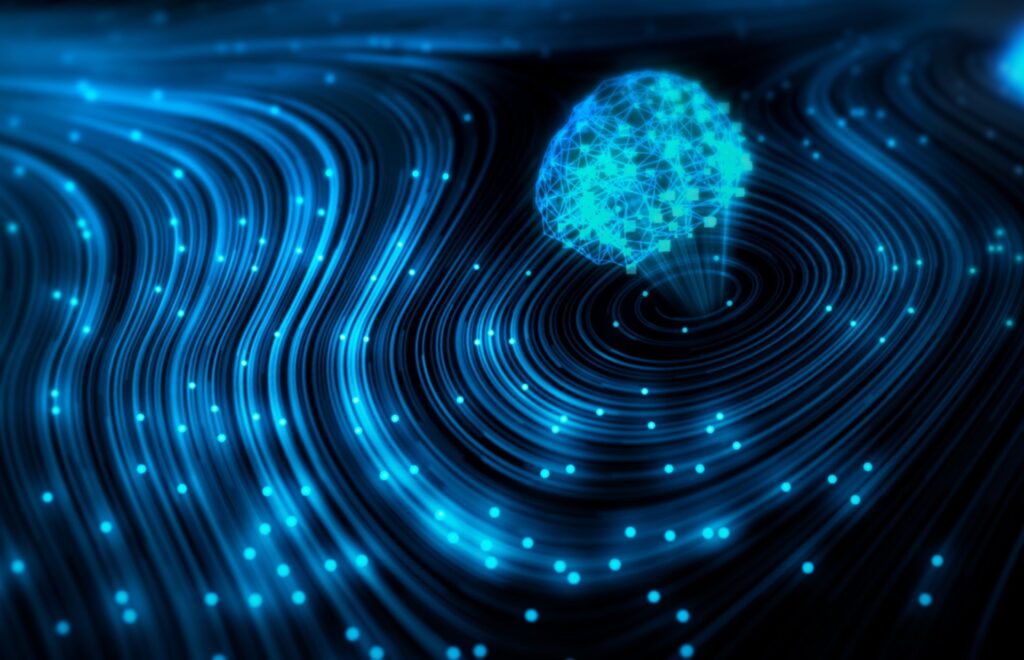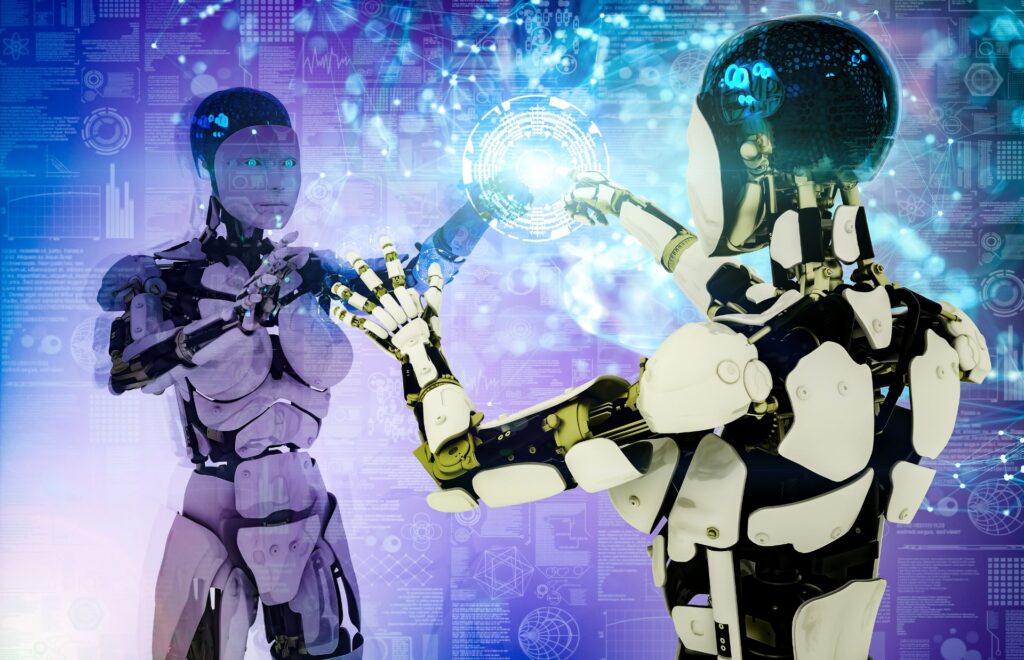Imagine weaving intricate worlds and conjuring captivating visuals with just the power of words. No longer does artistic expression require brushes, palettes, or pixels. With Google Bard’s ground-breaking AI image generation feature, anyone can become a digital Michelangelo, crafting stunning visuals straight from their imagination.
This article delves into the fascinating world of AI image generation with Bard, shedding light on its inner workings and empowering you to explore its creative potential.
A Brushstroke of AI: How Does It Work?
At its core, Bard’s image generation relies on a powerful deep learning model called Imagen. This model has been trained on a massive dataset of text and images, allowing it to understand the intricate relationships between words and their visual representations. When you provide a text prompt, Bard essentially dissects your words, deciphering their meaning, style, and context. With this understanding, Imagen paints a picture using its vast knowledge of visual concepts, crafting an image that aligns with your prompt.
Think of it like this: you provide the brushstrokes (your prompt), and Bard, the AI artist, uses its deep understanding of color, composition, and form to bring your vision to life on the canvas.
From Simple Sketches to Masterpieces: Unleashing Your Creativity
The beauty of Bard’s image generation lies in its versatility. Whether you’re a seasoned artist seeking new avenues for expression or a curious beginner dabbling in digital art, Bard caters to your creative level.
For the budding artist:
- Start with simple prompts: Describe basic objects, landscapes, or even emotions like “a vibrant coral reef,” “a cozy cabin in the woods,” or “a feeling of joy.” Bard will interpret your words and generate corresponding visuals, helping you grasp the core concepts of AI image generation.
- Experiment with styles: Let Bard paint your vision in different artistic styles. Specify “a watercolor painting of a starry night sky,” “a pixel art rendition of a bustling city,” or “a Van Gogh-inspired portrait of a sunflower.” Bard will adapt its “brushstrokes” to match your desired style, showcasing the diversity of its artistic repertoire.
For the seasoned artist:
- Dive into complex narratives: Craft intricate storylines and challenge Bard to visualize them. Describe a fantastical creature, a historical event from a unique perspective, or even a scene from your own fictional world. Bard’s vast knowledge base allows it to interpret complex narratives and translate them into captivating visuals.
- Fine-tune your creations: Bard provides options to refine your images. Specify desired colors, moods, or even specific objects to be included. This level of control empowers you to sculpt your vision with precision, transforming basic sketches into masterpieces.

Beyond Aesthetics: The Power of AI-Generated Images
While the artistic potential of Bard’s image generation is undeniable, its applications extend far beyond mere aesthetics. This technology holds immense promise in various fields:
- Education: Imagine bringing historical events, scientific concepts, or even literary characters to life with captivating visuals. Bard can empower educators to create interactive and engaging learning experiences, fostering a deeper understanding in students.
- Product design: Brainstorming new product ideas often involves visualizing concepts. Bard can help designers rapidly generate visual representations of their ideas, accelerating the design process and fostering innovation.
- Accessibility: For individuals with limited artistic abilities, Bard opens doors to creative expression. By simply describing their vision, they can create stunning visuals, promoting inclusivity in the world of art.
A Responsible Canvas: Ethical Considerations
It’s important to remember that AI-generated images are not always perfect. Biases present in the training data can be reflected in the generated images, and it’s crucial to be mindful of these potential biases when using the tool.
Additionally, issues of copyright and ownership arise when dealing with AI-generated art. It’s important to understand the usage rights associated with these images and use them responsibly.
Also lets talks a bit more on competition. In the below section lets understand how Google plans to compete with Rival such as ChatGPT Plus
Pixels vs. Prose: How Google Bard’s AI Images Challenge ChatGPT Plus
The battle for AI supremacy just got a whole lot more colourful. Google Bard, the search giant’s answer to OpenAI’s ChatGPT, has unveiled a game-changer: AI image generation. This exciting new feature throws down the gauntlet to rivals like ChatGPT Plus, promising a visual storytelling experience that goes beyond mere text. But how exactly does Bard plan to dominate the digital canvas? Let’s dive into the brushstrokes of this artistic brawl.
The Power of Two: Words and Images Collide
While ChatGPT Plus boasts access to the latest DALL-E iteration, Bard takes a different approach. It integrates its text-to-image model, Imagen 2, directly into the platform, offering seamless image creation alongside its existing text generation capabilities. Imagine crafting a poem and then instantly visualizing it with stunning AI-generated art. Bard breaks down the barrier between written and visual narratives, allowing users to express themselves in richer, more immersive ways.
Free as a Bird (or Pixel)
Unlike its competitor, Bard’s AI image generation comes at no additional cost. This democratizes the creative process, making AI-powered visuals accessible to everyone, not just paying subscribers. This strategic move could attract a wider audience, particularly budget-conscious creators and educators who see the potential of AI art in various applications.
Safety First, Creativity Always
AI art has its fair share of ethical concerns. Google emphasizes responsible development with Imagen 2. The model undergoes rigorous testing to mitigate the risk of harmful outputs, and its digital watermark, SynthID, ensures transparency about AI-generated content. This commitment to safety and responsible use could give Bard an edge in attracting users wary of potential biases or misuse in AI-generated visuals.
The Bard Advantage: Beyond Aesthetics
While visual appeal is crucial, Bard doesn’t stop there. It leverages its core strength, language expertise, to provide a more comprehensive AI art experience. Bard’s understanding of context and nuance allows it to generate images that not only look good but also accurately reflect the user’s intent and the essence of the accompanying text. This deeper understanding could lead to more meaningful and impactful visual storytelling.

The Canvas is Set, the Battle is On
The competition in the AI realm is fierce, and the fight for creative dominance is far from over. While ChatGPT Plus offers access to a powerful image generation tool, Bard’s free, integrated approach, coupled with its focus on responsible development and text-driven image creation, makes it a strong contender. Ultimately, the winner will be determined by user adoption, creative output, and how effectively these AI tools empower individuals to express themselves and bring their stories to life, in both words and pictures.
One thing is certain: with Google Bard entering the ring, the landscape of AI-powered storytelling is about to get a whole lot more vibrant. So, grab your metaphorical brushes, unleash your imagination, and let the pixels and prose flow!
The Future Unfolds: A Collaborative Canvas
The world of AI image generation is still in its nascent stages, but the possibilities are boundless. As technology continues to evolve, we can expect even more sophisticated and nuanced image creation capabilities. Imagine collaborating with AI assistants to create interactive art installations, personalized experiences, or even entirely new art forms.
With Google Bard, the power of artistic expression is no longer confined to the privileged few. It’s a tool for anyone to explore their creativity, challenge their perspectives, and push the boundaries of visual storytelling. So, pick up your digital brush (or rather, your keyboard), unleash your imagination, and paint your world with the magic of AI. Remember, the masterpiece you create might just change the way we see the world.
Also Read: Microsoft Edge Sprouts Wings in 2024: Android Embraces Extensions!
For More Articles Click Here

